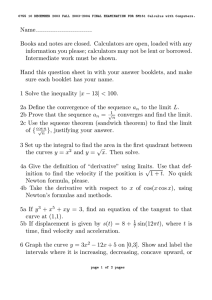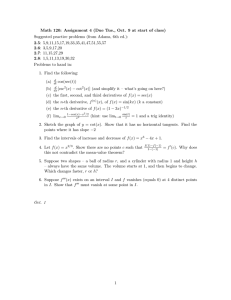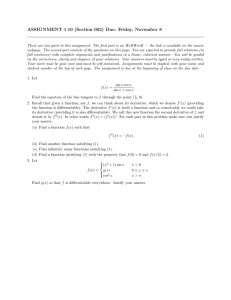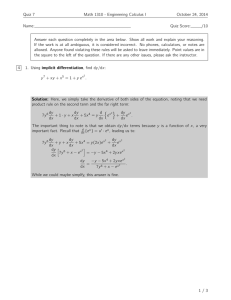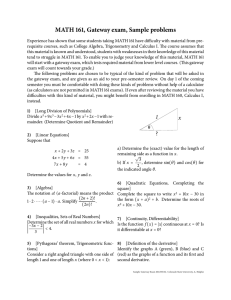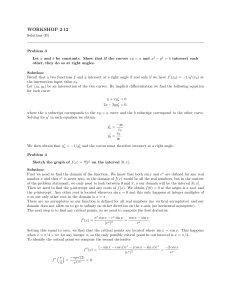Lesson 24. The Chain Rule 1 Today
advertisement
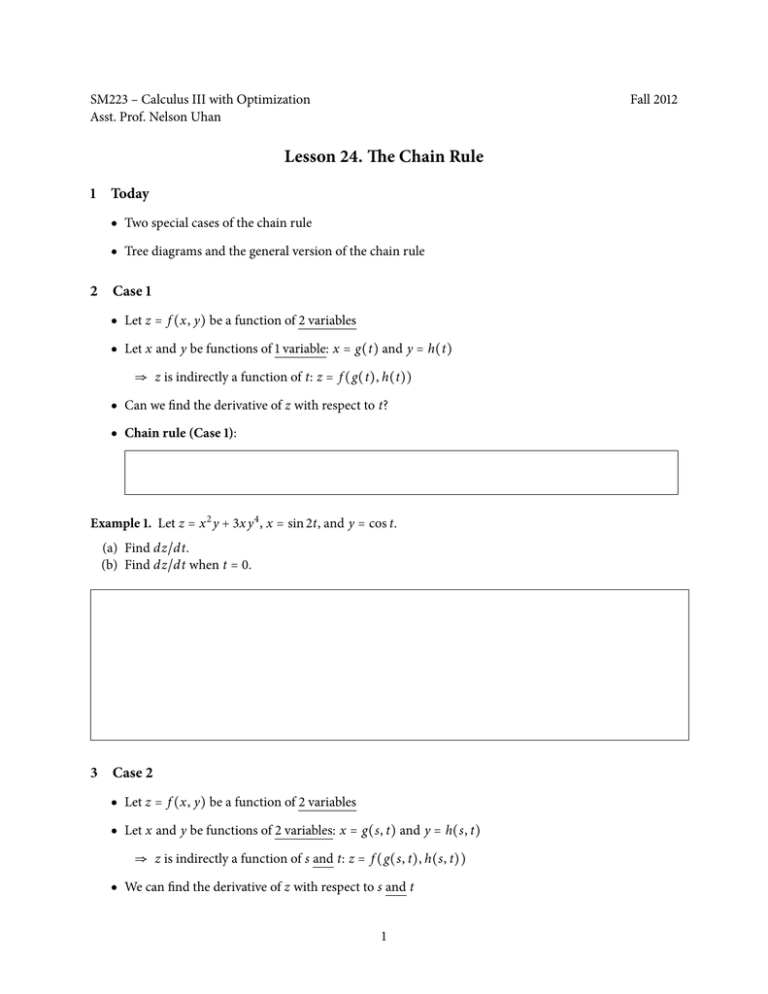
SM223 – Calculus III with Optimization Asst. Prof. Nelson Uhan Fall 2012 Lesson 24. The Chain Rule 1 Today ● Two special cases of the chain rule ● Tree diagrams and the general version of the chain rule 2 Case 1 ● Let z = f (x, y) be a function of 2 variables ● Let x and y be functions of 1 variable: x = g(t) and y = h(t) ⇒ z is indirectly a function of t: z = f (g(t), h(t)) ● Can we find the derivative of z with respect to t? ● Chain rule (Case 1): Example 1. Let z = x 2 y + 3x y4 , x = sin 2t, and y = cos t. (a) Find dz/dt. (b) Find dz/dt when t = 0. 3 Case 2 ● Let z = f (x, y) be a function of 2 variables ● Let x and y be functions of 2 variables: x = g(s, t) and y = h(s, t) ⇒ z is indirectly a function of s and t: z = f (g(s, t), h(s, t)) ● We can find the derivative of z with respect to s and t 1 ● Chain rule (Case 2): Example 2. Let z = sin x cos y, x = st 2 , y = s 2 t. Find ∂z/∂s and ∂z/∂t. 4 Tree diagrams ● How can we remember the chain rule (Case 2)? ● Draw a tree diagram: ● To get ∂z/∂s, follow all the paths from z to s: ● This idea can be extended in general to functions of 3 or more variables 2 Example 3. Write out the chain rule for the case where z = f (w, x, y), w = g(s, t), x = h(s, t), y = ℓ(s, t). Example 4. The length ℓ, width w, and height h of a box change with time. At a certain instant the dimensions are ℓ = 1 m, w = 2 m, and h = 2 m. ℓ and w are increasing at a rate of 2 m/s while h is decreasing at a rate of 3 m/s. Find the rate at which the length of the diagonal is changing at that instant. 3




